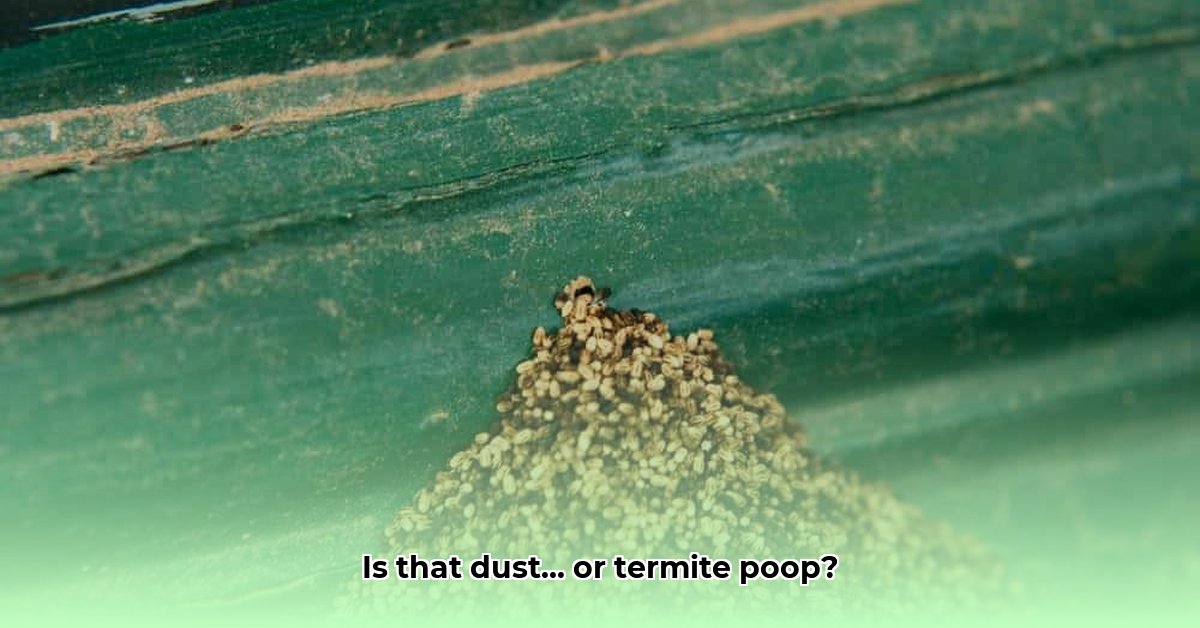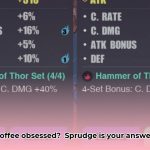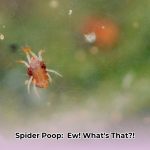Worried you might have termites? One of the first signs is often their droppings, called frass. This guide helps you identify termite frass, distinguish it from sawdust, and understand what to do if you find it.
What Does Termite Frass Look Like?
Termite frass looks like tiny, dry pellets, about the size of a grain of sand or ground coffee. They are typically light brown or wood-colored and often have six sides, though this can be hard to see without magnification. Unlike sawdust, which is soft and powdery, frass has a distinct hardness and doesn’t crumble easily. It also lacks the woody scent you might find with sawdust.
Drywood vs. Subterranean Termite Droppings
Different termites leave different droppings:
- Drywood Termites: These leave dry, granular, pellet-shaped frass near small “kick-out” holes in the wood. These kick-out holes are how they expel the frass from inside the wood.
- Subterranean Termites: These build mud tubes for moisture and protection. Their droppings are usually hidden within these tubes, mixed with soil and debris, and therefore less visible.
- Dampwood Termites: These prefer moist wood. Their droppings are larger and more irregular than drywood termite frass, often resembling coarse sawdust.
Here’s a table summarizing these key differences:
| Feature | Drywood Termite Frass | Subterranean Termite Droppings | Dampwood Termite Frass | Sawdust |
|---|---|---|---|---|
| Size | < 1mm | Varies | Larger than drywood | Varies |
| Shape | Six-sided pellets | No distinct shape | Irregular | Irregular, shavings |
| Texture | Hard, dry | Often mixed with mud | More like sawdust | Soft, powdery, fibrous |
| Color | Light to dark brown | Darker, mud-like | Similar to wood color | Varies with wood type |
| Location | Near kick-out holes | In mud tubes | Near damp wood | Near woodworking |
Frass vs. Sawdust: A Simple Test
If you’re unsure whether you’re looking at frass or sawdust, try the water test:
- Drop a few pellets into a glass of water.
- Fresh frass from an active infestation will likely dissolve or break apart. Older frass will probably remain intact, suggesting a possible past infestation.
Important Note: The water test isn’t foolproof. Further investigation is always recommended.
Where to Look for Termite Frass
Termites love wood! Focus your search on these areas:
- Near Kick-Out Holes: These are small holes in wood where drywood termites expel their frass.
- Window Sills and Door Frames: These horizontal surfaces can collect falling frass.
- Floors: Check along baseboards, under carpets, and between floorboards.
- Attics and Crawl Spaces: Inspect exposed wood and insulation.
- Wooden Porches and Decks: Any exposed wood is susceptible.
- Corners and Wall Joints: Frass can accumulate here.
- Ceilings: Frass can fall from infested ceiling wood.
What to Do if You Find Termite Frass
Finding frass can be alarming, but early detection is key. Here’s what to do:
- Don’t Disturb: Resist cleaning or disturbing the area. This preserves evidence for the pest control professional.
- Document: Take clear photos of the frass and any other signs of termite activity (e.g., damaged wood, mud tubes, discarded wings).
- Contact a Professional: Contact a qualified pest control professional immediately. They can accurately diagnose the infestation, determine its extent, and recommend the best treatment plan. Don’t attempt DIY termite control; it can often exacerbate the problem.
Why Termite Frass Matters
Termite frass is often the earliest and most readily visible sign of an infestation. Because termites eat wood from the inside, frass provides an important clue before significant structural damage becomes apparent. Identifying the type of frass can also help determine the type of termite, which is crucial for effective treatment. Ignoring frass allows the infestation to grow, potentially leading to costly repairs down the line.
A Word of Caution
While this guide provides helpful information, termite behavior and frass characteristics can vary. Some experts suggest visual identification alone isn’t always definitive. Ongoing research continues to refine our understanding of termites. If you’re concerned, consulting a pest control professional is always the best approach. They possess the expertise and tools for accurate identification and treatment. Regular professional inspections are the best preventative measure against termite infestations.
- Hydro Extrusion USA LLC Provides Extensive Custom Aluminum Extrusion - December 29, 2025
- Hydro Extrusions USA Leads North American Aluminum Profile Solutions - December 28, 2025
- Hydro North America Leads Aluminum Extrusion Solutions Across Diverse Industries - December 27, 2025
















